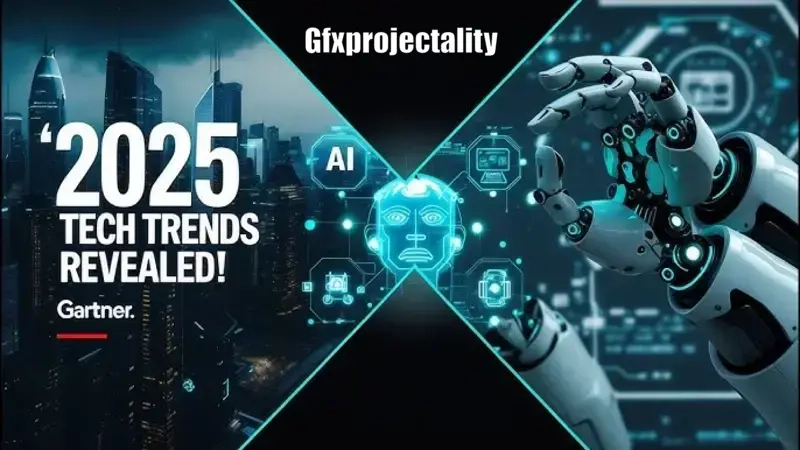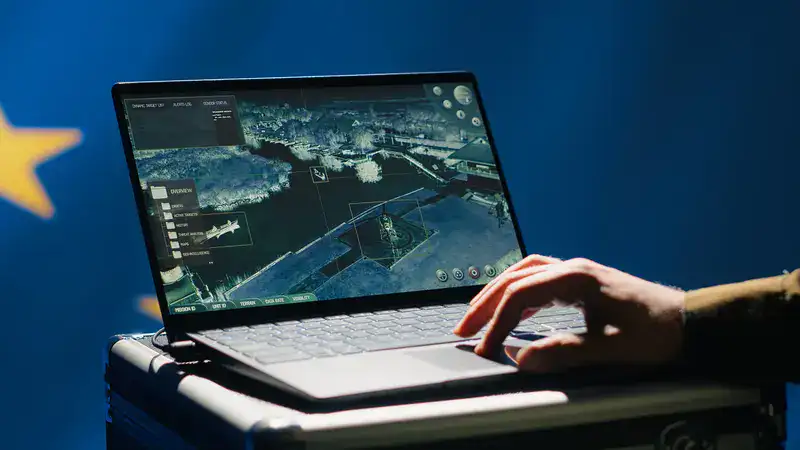Technology is evolving faster than ever, and one term shaping the digital world today is Tech Trends Gfxprojectality. This innovative concept is not just another buzzword — it represents the merging of graphics, projection, and immersive experiences powered by artificial intelligence and next-generation computing. Businesses, designers, and developers are already exploring its potential to create smarter, more interactive, and visually stunning worlds.
In this in-depth guide, we’ll explore what Tech Trends Gfxprojectality truly means, how it’s changing industries, and why it’s a game-changer for the next digital decade.
Understanding the Concept of Tech Trends Gfxprojectality
The phrase Tech Trends Gfxprojectality combines “GFX,” referring to advanced graphics and visual technology, and “Projectality,” meaning projection, expansion, and futuristic potential. Together, they describe the visual and immersive evolution of technology, where 3D environments, AI-driven rendering, and real-time interactivity merge into one seamless experience.
At its core, Gfxprojectality transforms how humans perceive the digital realm. It’s not about watching technology — it’s about experiencing it. From virtual workplaces and AI-generated art to real-time medical simulations, this movement is expanding human creativity beyond traditional boundaries. Visit Worldurbanpeak.com for more details.
How Tech Trends Gfxprojectality Is Changing Modern Industries
Every major industry today is finding a place for Tech Trends Gfxprojectality. Its influence is visible in design, healthcare, education, and entertainment. Here’s how it’s reshaping the global landscape:
1. Design and Architecture
Architects now use immersive projection tools to showcase buildings before construction even begins. Clients can walk through digital replicas, view every angle, and suggest changes instantly. This visual precision minimizes errors, saves time, and enhances creativity.
2. Education and Training
In classrooms and training labs, Tech Trends Gfxprojectality introduces interactive learning. Imagine students exploring space in a virtual environment or doctors practicing surgery on a lifelike 3D model. These experiences boost engagement and retention while preparing learners for real-world challenges.
3. Healthcare and Medical Visualization
Hospitals use high-definition simulations to plan complex surgeries, analyze data in 3D, and even create virtual patient models. It helps surgeons perform with greater accuracy and reduces risk during real operations.
4. Gaming and Entertainment
The gaming world thrives on immersion, and Tech Trends Gfxprojectality takes that to the next level. From realistic lighting to AI-based character emotions, the boundary between real and virtual worlds is blurring fast.
5. Business and Marketing
Companies use interactive 3D experiences, AR product demos, and virtual showrooms to connect with customers like never before. These visual tools boost engagement and conversions, making digital marketing more human and memorable.
Core Technologies Behind Gfxprojectality
The rise of Tech Trends Gfxprojectality depends on several powerful technologies working in harmony.
| Core Technology | Description | Role in Gfxprojectality |
|---|---|---|
| Artificial Intelligence | AI enhances design automation, content creation, and visual optimization. | Enables adaptive, intelligent visuals. |
| AR/VR/XR | Creates immersive and interactive environments. | Forms the experiential base for projection and realism. |
| Real-Time Rendering Engines | Engines like Unreal and Unity produce realistic simulations instantly. | Essential for seamless motion and lifelike environments. |
| Cloud & Edge Computing | Provides scalable processing power with reduced latency. | Makes high-end visuals accessible worldwide. |
| Quantum Computing (Future) | Will exponentially boost data handling and simulation capabilities. | Future enabler for complex immersive systems. |
These technologies blend to deliver real-time visualization, predictive design, and adaptive learning, all hallmarks of the Gfxprojectality movement.
Advantages of Tech Trends Gfxprojectality
Adopting Tech Trends Gfxprojectality offers countless benefits to organizations, creators, and users alike:
-
Enhanced Engagement: Immersive visuals keep audiences captivated longer.
-
Faster Innovation: Real-time simulations cut down testing and development cycles.
-
Cost Reduction: Virtual prototyping saves resources and reduces physical waste.
-
Improved Learning Outcomes: Interactive education delivers better understanding and memory retention.
-
Global Collaboration: Teams can work together in shared virtual spaces across continents.
-
New Revenue Models: From virtual events to immersive advertising, new business opportunities arise daily.
By integrating this trend early, businesses can future-proof their operations and lead in visual innovation.
Challenges Facing Gfxprojectality
No technological revolution is free from obstacles. While Tech Trends Gfxprojectality holds incredible potential, it also brings a few challenges that innovators must address:
-
High Implementation Costs: Developing immersive experiences requires specialized hardware and software.
-
Bandwidth & Latency Issues: Real-time rendering demands stable high-speed internet.
-
Privacy Concerns: Immersive tools collect massive user data, raising security questions.
-
Accessibility Gaps: Not every region can afford or support these advanced setups.
-
Standardization Needs: The industry still lacks unified standards for cross-platform experiences.
Solving these issues will define how quickly Gfxprojectality becomes mainstream and accessible to everyone.
Tech Trends Gfxprojectality vs. Traditional Visualization
| Aspect | Gfxprojectality | Traditional Visualization |
|---|---|---|
| Interactivity | Fully immersive and real-time | Static and limited |
| User Experience | Engaging, 3D, multi-sensory | Mostly 2D and passive |
| Data Integration | Connects with AI & IoT systems | Minimal data interaction |
| Scalability | Cloud-powered and global | Locally limited |
| Adaptability | Learns and evolves with user input | Fixed and manual |
This comparison highlights why Tech Trends Gfxprojectality is leading the next phase of digital transformation.
Market Outlook: The Rise of Visual Intelligence
Analysts predict that industries powered by Gfxprojectality — like AR/VR, immersive education, and AI-driven design — will grow beyond $100 billion globally by 2030.
As 5G and edge computing expand, latency will drop, devices will become affordable, and immersive experiences will reach the average consumer.
Brands already exploring this transformation will enjoy a massive head start as adoption accelerates worldwide.
Moreover, governments and tech leaders are investing heavily in digital reality infrastructure, ensuring that Tech Trends Gfxprojectality becomes a vital pillar of innovation and employment in the coming decade.
Pros and Cons of Tech Trends Gfxprojectality
| Pros | Cons |
|---|---|
| High engagement and user satisfaction | Requires powerful hardware |
| Boosts creativity and visualization | Expensive to develop |
| Enables global collaboration | May cause digital fatigue |
| Great educational potential | Privacy and ethical risks |
| Future-ready and scalable | Lacks universal standards |
A balanced understanding of both sides helps industries plan better strategies for adopting this technology responsibly.
How to Prepare for the Gfxprojectality Era
Businesses and individuals can take practical steps today to embrace this trend effectively:
-
Learn the Tools: Explore platforms like Unreal Engine, Blender, Unity, and NVIDIA Omniverse.
-
Train Your Teams: Develop AR/VR and AI design skills through online courses and workshops.
-
Experiment Small: Start with simple projects, such as virtual showrooms or interactive models.
-
Invest in Infrastructure: Upgrade connectivity and computing capacity for smooth rendering.
-
Collaborate Across Fields: Designers, engineers, and marketers must work together to create unified immersive experiences.
These steps ensure readiness for when Tech Trends Gfxprojectality becomes a standard part of business and digital life.
Frequently Asked Questions (FAQs)
Q1. What exactly does Tech Trends Gfxprojectality mean?
It refers to the fusion of advanced graphics, projection technologies, and AI systems that create immersive, interactive environments redefining how humans interact with the digital world.
Q2. How is Gfxprojectality different from the metaverse?
The metaverse is a broader virtual ecosystem, while Gfxprojectality focuses specifically on visual realism and intelligent design systems that power such experiences.
Q3. Is Gfxprojectality suitable for small businesses?
Yes. Many cloud-based tools allow small businesses to create immersive presentations, 3D catalogs, and AR experiences without huge investments.
Q4. Which sectors will benefit most?
Education, healthcare, design, retail, entertainment, and digital marketing will see the most immediate transformation.
Q5. What skills are needed for this future?
3D modeling, AI design, programming, and data visualization are key skills that can help professionals grow with Gfxprojectality.
The Future of Tech Trends Gfxprojectality
Looking ahead, Tech Trends Gfxprojectality is set to dominate how we visualize, design, and interact with technology. As computing power increases and AI becomes smarter, immersive reality will become part of daily life.
From virtual hospitals and AI-assisted learning to digital cities that mirror the real world, this movement will revolutionize human interaction forever.
Businesses that adopt it early will become leaders of the new visual frontier, while those who hesitate may struggle to keep up with the pace of transformation.
In simple words, Tech Trends Gfxprojectality is not just about technology — it’s about the future of human imagination.
Final Thoughts
The world is rapidly transitioning from static screens to dynamic, interactive environments.
Tech Trends Gfxprojectality bridges that gap, transforming how people learn, work, and connect.
It merges the artistic with the analytical, the visual with the intelligent, and the virtual with the real.
For creators, it’s a canvas.
>For businesses, it’s an opportunity.
>For humanity, it’s the next leap forward.


